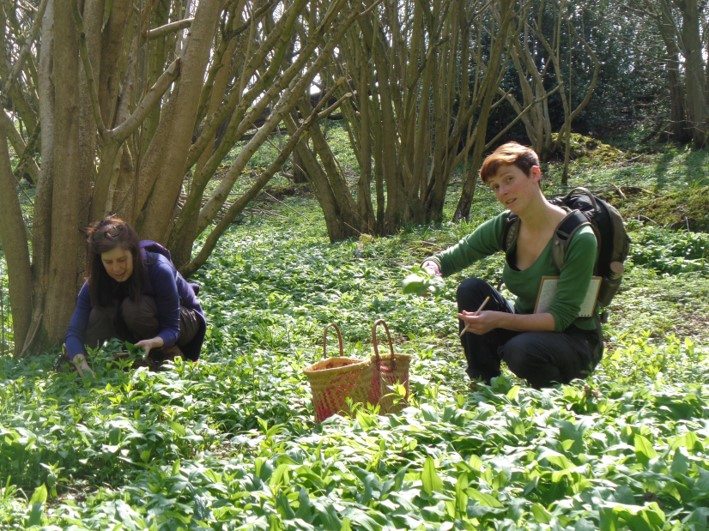We’re right into foraging season now and will be running courses regularly for the next couple of months. We often get asked by our customers for tips for foraging so here’s a few things for you to think about and hopefully find useful.
Foraging and the law
There are a number of laws that you need to be aware of when foraging. First up be mindful of laws on trespassing. Check to see if your intended destination is common land, open access land, or a public right of way, Otherwise you will need to get the landowners permission or you will be tresspassing.
Assuming you aren’t tresspassing or have permission then 3 pieces of legislation come into play:
The Theft Act (1968) states that:
“A person who picks mushrooms growing wild on any land, or who picks flowers, fruit or foliage from a plant growing wild on any land, does not (although not in possession of the land) steal what he picks, unless he does it for reward or for sale or other commercial purpose.”
This is generally described as ‘the 4 Fs’, of fungus, fruits, foliage and flowers. And if you think about this it makes sense; if you pick a mushroom, an apple, a leaf or a flower you aren’t particularly harming the plant/fungus.
This then leads us into roots which are covered by The Wildlife and Countryside Act (1981). Under this legislation it’s illegal to dig up any wild plant without permission from the landowner or occupier. And again this makes sense as if you uproot a plant you’ll kill it and it won’t be able to reproduce.
So whilst we do dig up some plants for eating, most notably burdock, we only dig up one plant in any given area. This photo of Mark Bunyan was taken on our trip to the Isle of Arran; we collected some burdock roots and used them to make burdock root scones.
The Countryside Rights of Way Act (2000) is something of a double edged sword in that it gives us access to designated areas of the countryside but at the same time it prohibits the removal of any part of plants or mushrooms.
I would also recommned that you check for local by-laws that may contain further restrictions.
Sustainability
Sustainability is a big deal for us, mostly because foraging sustainably is the right thing to do, but also because we need to think about the sustainability of our business. If we were to pick the area bare then we wouldn’t be able to run anymore courses.
So we forage in a sustainable manner for ourselves and our courses and we strongly encourage our customers to do the same. In practical terms this means only picking a small percentage of any one species in any one area. We go for the ‘10% rule’ where we only pick from 10% of the plants in any one place, leaving plenty behind to reproduce, so we can go back the following year, and of course to provide habitat and food for the wildlife, which to be frank can do with all the help it can get.
Where
Avoid collecting plants in areas where you might find agricultural or industrial run-off. Also avoid areas that have heavy vehicle use.
Also avoid picking plants in areas that are subject to dog walking, for what I hope are fairly obvious reasons. A lot of people don’t forage any plants that are below knee height for this reason, but that would discount a whole bunch of plants that I love to eat, including ramsons, ground ivy, young cow parsley and young hogweed shoots. So we pick in areas where we don’t get much dog walking going on and then wash the plants before consuming them.
When
We try to forage on a sunny day, this is especially true if we’re collecting flowers to make herbal remedies, but if we’re after leaves or berries for eating, it’s not such an issue.
Containers
Use containers made of natural fabrics to collect your plants, we still use wicker baskets and also ones we’ve made ourselves from sweet chestnut bark. Putting plants into polythene bags means that they may very well sweat and by the time you get home they can be mush in the bottom of the bag.
We also use old fashioned brown paper bags to keep the various plants we collect seperate from each other.
Books/apps
There’re many foraging books on the market and they all have their strengths and weaknesses. This is just a small selection of the books we have.
But nearly always these books are poor at plant identification, so I would strongly suggest that you get 2 or 3 good books to help with identifying plants and once you can confidently identify the plants, look them up to find out whether they’re edible or harmful or have herbal uses.
By ‘confidently identify’, you should be able to look at a plant with the same degree of recognition as you would have looking at a tin of beans on a shop shelf.
Don’t be tempted to buy the ‘pocket version’ of books; they might be easier to carry but to get them pocket sized they leave out many species and cut down the information on those plants that are included.
I’m not a fan of using an app to identify plants in the same way that I won’t rely on my phone to help me navigate cross country. For navigation I prefer a map and compss, for identification I use a book. Partly this is because if you point you’re phone at a plant you don’t learn anything. By using a book you have to look at features on the plant such as leaf shape, number and colour of petals, shape of the stem, where it’s growing, how it smells etc; this helps to build a knowledge base in your head.
I hope you find this helpful, any comments please leave below.




